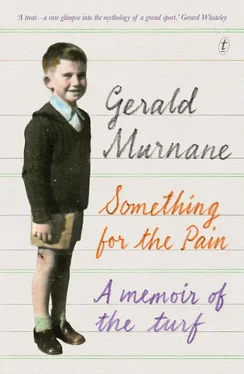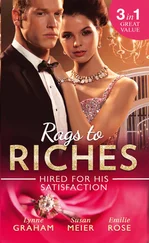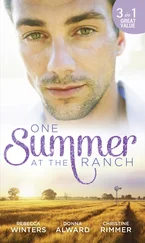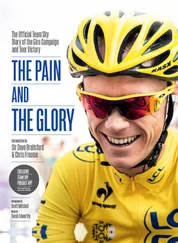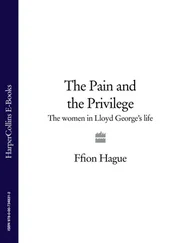Nowadays, I speculate that most of the buyers of Form-Plan were persons such as I was in those days: workers and lowly public servants and small-time punters, all dreaming of their own versions of my leisurely life in Dandenong Road, Armadale. I speculate further that even Form-Plan, successful though it seemed for a time, was not what they had hoped for when they sent off their ten pounds to Mr Maclean. They had wanted lively betting, action, bets in every race, frequent winners at long odds. They could not foresee themselves retiring early as a result of backing twenty two-years-old horses each year at short odds. As for the real punters — the stable commissioners, the likes of Teddy Ettershank, and the bookmakers especially — if they even read the Sporting Globe , they would have barely glanced at Mr Maclean’s full-page ads. They, the real punters, had seen systems come and go. As a leading bookmaker said to me many years later, ‘I like all punters, but I like systems punters best.’
I’ve given away already the end of my story. After Melbourne Cup Day, we got stuck on a plateau for several months. We backed winners, but we backed even more losers, a few of them unplaced, which was doubly costly. The last Form-Plan horse that I backed ran at Flemington one wet day in the autumn of 1959. I forget its name but its colours were All brown and it was trained by one of the famous Hoysted family at Wangaratta. Its odds were eight-to-one, the longest I had ever been offered against a Form-Plan horse. If the horse had won, the system would have been in profit again, but the horse never flattered at any stage.
It would be easy to dismiss a betting method such as Form-Plan, and most of its disappointed followers surely did so. I would be fairly confident, though, that the average small punter who tries to back the winner of every race would be considerably better off at the end of each year after following Form-Plan or some similar method than after throwing his or her money at horse after horse in race after race. I even wish I had kept my old Sporting Globe collection for a few years afterwards and had checked the results of Form-Plan during the years after I had abandoned it. I don’t recall when the ads for the system disappeared from the Sporting Globe , but I recall my receiving a newsletter from Mr Maclean at some time in 1959. He had decided to change some of the rules of his method. We were no longer to back horses starting from wide barriers or on days when the track was heavy. Needless to say, these rules would have prevented me from backing several losers during months past. The last message that I received from Mr Maclean was another newsletter. He had devised a completely new method of systematic betting. Results for the past few years were outstanding. Persons who had previously purchased Form-Plan could buy the new system at a discounted price. I decided that the man was incorrigible and a rogue, but that was a few years before I read Otto Fenichel’s book. Now I incline to the belief that poor Mr Maclean was truly desperate to learn how he stood with God.
11. Lickity and the Eccentric Aunt
ONLY TWICE DURING my long lifetime have I intercepted from someone a look of admiration for my — what should I call it? — not wisdom but sagacity, perhaps, or shrewdness. And, strange to tell, I was grudgingly admired on both occasions on account of my involvement with Lickity (Cerise, gold hoops and cap).
I may have seemed ambivalent towards Teddy Ettershank in an earlier section, but the story of Lickity shows that Teddy sometimes took my father fully into his confidence, to their mutual advantage. Late in 1957, Teddy enlisted my father, and my father even enlisted me, in a carefully planned, massive, and ultimately successful off-course betting plunge.
Illegal off-course bookmakers operated in every suburb and town in Victoria for decades before the introduction of the TAB in 1961. At the Royal Commission that preceded the establishment of the TAB, one illegal bookmaker said in evidence that his annual turnover exceeded two million pounds. The report of the commission estimated that the total off-course turnover was at least three times the on-course turnover. And this was at a time when race meetings attracted crowds unheard of today. The off-course men were known as starting-price, or SP, bookmakers because they paid winning bets according to the odds on offer at the racecourse at the start of each race.
Teddy Ettershank and his mysterious band of followers mostly bet with on-course bookmakers. Teddy and two or three others would rush along the rails at an agreed time, calling out their bets to those leading bookmakers who knew them by name and with whom their credit was good. The aim was to get the best odds available before the weight of money obliged the bookmakers to reduce their odds. Sometimes, when they were betting with a very large sum, Teddy and his men might go along the rails a second time, but then, of course, they would have to accept lower odds and a lower overall return on their outlay.
Occasionally, Teddy would organise an off-course plunge. My guess is that he did this when the horse to be backed was considered a certainty and when the sum to be bet was huge, even by Teddy’s standards. The advantage of an off-course plunge was that the money all went on at the best available odds. Moreover, if none of the smart men showed his face in the betting ring on course, let alone backed the horse in question with the bookmakers there, then the seeming lack of interest in the horse would cause on-course bookmakers to extend the horse’s odds, thereby increasing the amount to be paid out by the off-course men. The only seeming drawback of an off-course plunge was its needing more men than usual to implement it — men whose credit was good with large off-course bookmakers and who could be trusted to phone their big bets through at the agreed time. This had to be just before the start of the race. (Sometimes a large SP operator was able to cover some of his risk by betting with a leading bookmaker on course. Employees of the biggest SP men went in and out of the turnstiles all day at the racecourse, phoning odds to their boss from nearby houses. Such men could be used to leak money back to the course, as the expression went, which reduced the starting price of the plunge-horse and hence the profit from the plunge.)
When Teddy was planning his off-course plunge on Lickity, I was working as a temporary clerk in the Bullion Office of the Royal Mint, in William Street, Melbourne. At the desk beside mine was Martin Dillon, who has been mentioned previously. I called him always Mister Dillon, but I’ll call him here by his first name, given that I’m now nearly twenty years older than he was then. I was fascinated by Martin. There were probably thousands like him in Melbourne and in country Victoria, but I had led a sheltered life and he was the first of his kind that I had met. Martin had been brought up as a Catholic in Chiltern, in north-eastern Victoria, but had cheerfully given up his religion at an early age. I had heard of lapsed Catholics, as we called them in those days, but Martin was the first I had met. He and his wife had parted company many years before, and he’d had since then a number of what are nowadays called partners. In newspaper reports of the 1950s, they were called de facto wives or common-law wives, but Martin referred to them as his lady-friends.
I’d had a girlfriend for a few weeks soon after I began work at the Royal Mint, but for the rest of my time there I was a solitary, and my seeming content to remain so seemed to exasperate Martin. He tried to stir me to action with stories of his own youth. He made much use of the verb to court . At my age, in Chiltern, so he told me, he had courted never fewer than two girls at a time, and even in my innocence I understood that to court had for him a wider range of meaning than it had for me.
Читать дальше
